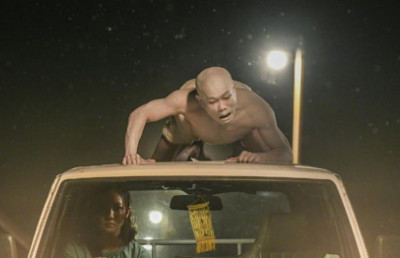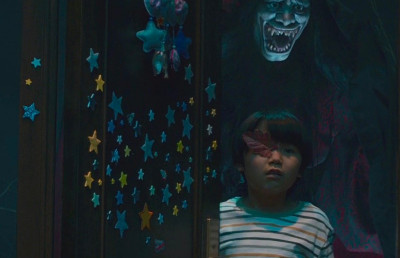Fantasia 2021: The Computer in Our Life
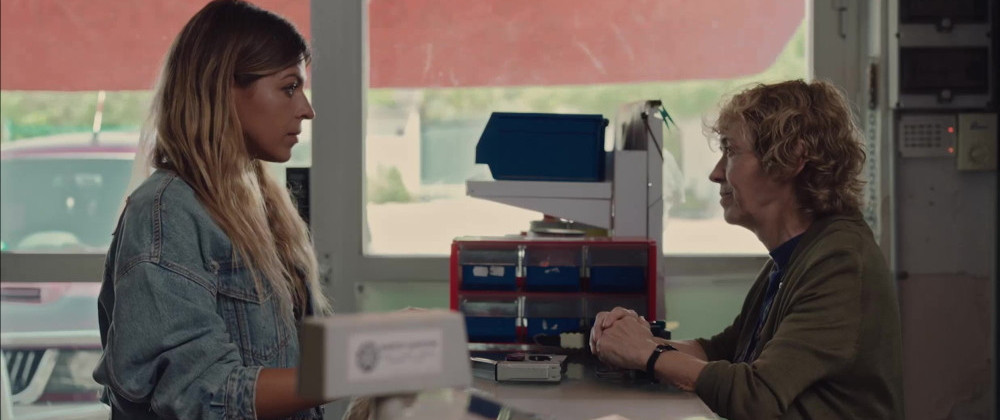
While Fantasia 2020 went entirely online because of the pandemic, the 2021 version adopted the hybrid model (and many festivals have done and some continue to do), where some of the more prominent titles played theatrically, some were streamed live and some could be screened asynchronously online for a set period of time. Hence the computer still played an integral part of Fantasia 2021. Whereas the upcoming 2022 edition will be back to its pre-2020 levels (as of today with all COVID-19 measures lifted). One film from 2021 which was entirely about the computer and how it has infiltrated our psyche is Dear Hacker (Alice Lenay, 2021).
The director Alice Lenay is a French research creator artist whose work delves into the para-social worlds of online social media platforms. Dear Hacker is Lenay’s PhD research creation project that is both a reflection of it and the research object itself. Some of the interviewees in her framed desktop space are people she did not know well or at all before the project but who she knew were interested in the area. And a few of them are her friends who volunteered to be part of the project. The film has Lenay in conversation with these largely intellectually minded people around the impact of the internet and the technologies around the internet on human interaction (including the computer itself, the desk it sits on, the objects on or around the computer, etc.). Dear Hacker is one of the most meta films you’ll ever see about the omnipotence of the online and para-social reality, and of the force of the internet in our lives. The ‘hacker’ of the title is not so much a singular entity invading our electronic space, but the idea of how our personal computer and internet ‘hacks’ into our life, our psyche.
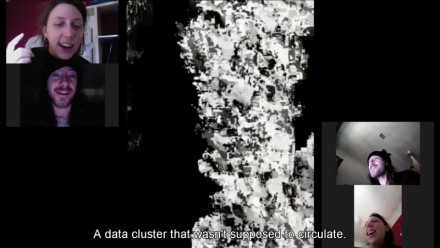
Dear Hacker
Dear Hacker can be defined as a recent outgrowth of digital cinema called the desktop film even if within that sub-genre there are many types (desktop documentary, desktop horror, desktop essay video, etc.) and there are some desktop films that originate entirely on the computer screen (‘screen life” films, Unfriended, Hosts) and some that incorporate the computer screen with conventional camera footage (like one that played Fantasia a few years ago, Cam, 2018); films that blend computer screen with other video cam footage such as surveillance camera, hidden cameras, etc. (Open Windows, 13 Cameras, 14 Cameras). Even the desktop documentary can be comprised of staged or entirely fictionalized footage (Watching the Pain of Others, 2018).
In any case, all desktop film should be seen as a continuum outgrowth of two prior sub-genres, the found footage film (Blair Witch Project, Paranormal Activity, [rec], etc.) and the ‘tech horror’ film (The Asphyx, Demon Seen, eXistenz, Chopping Mall, Ringu, Pulse, etc.). What is interesting about Dear Hacker is how it blends all of these different forms. Each shot is a full frame of a Zoom recorded conversation, usually between two people, the director Alice Lenay, and the person she is interviewing or speaking with, one at a time. Some of the people who appear are very comfortable on screen, some, like the thoughtful man with the glasses, are uncomfortable. One of the sub-themes popping into most of the conversations, which connects Dear Hacker to tech horror, is the idea that there is something supernatural, or not quite explainable about the relationship between a person and the online interface. Which may come out in the shape of a hardware quirk or a technical problem that magically disappears. Lenay in fact thinks there is a ‘hacker’ in her webcam; or maybe an actual person, and wonders how they can be contacted; or maybe that her computer has some type of ‘Cronebergian’ parasite (as opposed to virus). Coincidences and superstitious habits can also build up around one’s computer. Like the person who keeps a plant near the computer because they think it resolves technical problems. Lenay plays within the desktop genre by creating an illusion of real-time by incorporating glitches, technical mistakes (image freezes, buffering) and elliptical edits that seem caused by the natural flow of computer time. Everything flows as if natural but we can see Lenay’s hair style or shirt top change, implying a change of time or day, an ellipsis, but one that feels inscribed within an overall ‘narrative’ which feels linear.
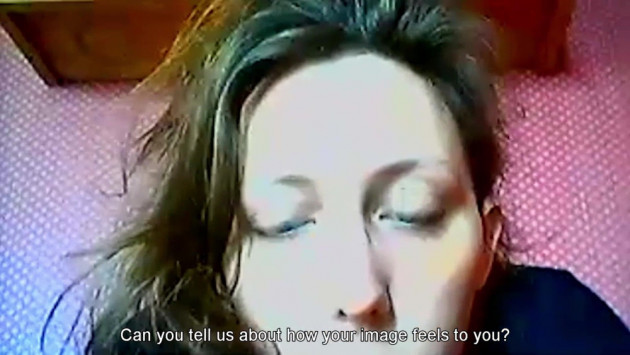
Dear Hacker
The organic bond between technology and humanity which has existed for centuries is touched on in a section of the film where Lenay invites a group of ‘mediums’ who try to imagine a sensorial relationship with the computer; closing their eyes and imagining that they can ‘touch’ and feel the body of the person they are communicating with. The film ends with non-desktop imagery, beginning with a white dot in a black square, giving way to a computer generated universe of stars, strobe lights, constellations, ending with pixilated black and white shapes which are abstract almost gestalt-like forms that the viewer can read whatever they want into.
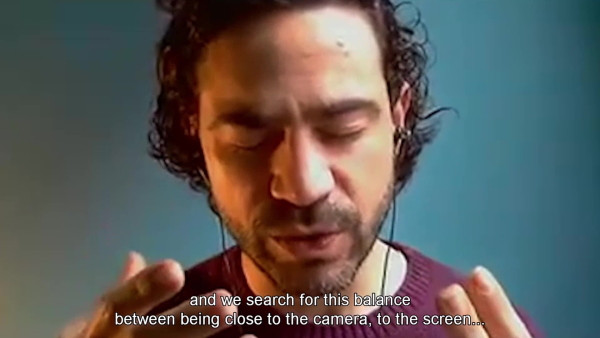

Trying to make physical contact through the computer
Kentucker Audley, who is dead ringer for Jason Shwarzman, plays James Preble, a sad sack memory auditor from our near future, 2035. Time and Memory are two themes that will never be exhausted, for the simple reason that cinema is the medium most inherently appropriate for those themes. And they are rich beyond exhaustion. Audley’s hands are everywhere in this film: co-writer, co-director, lead actor, as James Preble who visits kindly old lady Bella (Penny Fuller) and Grace Glowicki as the younger Bella. The other key humans are Bella’s dislikeable son Peter (Reed Birney, CEO of the evil advertising company at the root of society’s ills), his wife and son, both equally evil in this morally simplistic world that feels more adult fairy tale than social satire about the oppressive presence of advertising and big business. The point here is that big business has advanced its corporate control over people by planting subliminal messages to sell their products directly into the consumer’s brain. A device which recalls the great Canadian advertising satire mockumentary The Bronswik Affair from 1978 (watch it for free here: https://www.nfb.ca/film/bronswik_affair/), where the Bronswik TV company has instilled mind controlling signals in its TV broadcast that forces consumers to buy what they don’t need. We have seen variations of this later on in Larry Cohen’s The Stuff (an ice cream that makes people addicted to its product), Videodrome, and Halloween 3: Season of the Witch. In this near future companies have gone directly to the source, your mind space, by making your dreams part of their advertising space, which they control by being in partner with the government who has legalized a system whereby your dreams are directly saved into a computer database which they can manipulate (hmmm, this doesn’t sound that different than the internet and its sophisticated ways to track your viewing, shopping and leisure preferences, does it?). This is a pure fantasy romance with an enchanting enough art and production design and a special visual effects team that uses the low tech effects to augment its charm, but ultimately a forgettable popcorn movie.
Beyond the Infinite Two Minutes (Japan, 2021, Junta Yamaguchi)
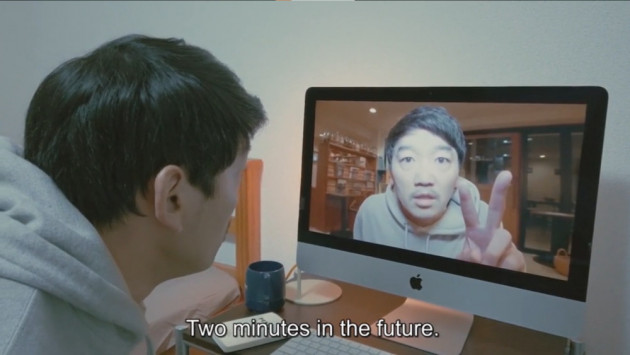
Beyond the Infinite Two Minutes
A one-person creative piece with Junta Yamaguchi the director, DP and editor of this clever, self-contained small budgeted concept film. Kato (Kazunari Tosa) is a café owner in Kyoto and lives in the flat above his shop. After a day of work he asks his employee Aya (Riko Fujitani) to close up shop while he goes up to his flat above the shop. Once in his room his iMac computer turns on and he sees own image explaining that he is Kato but two minutes into the future, linked in a two minute future loop with the TV in his downstairs shop. This film is the debut of the Japanese theatre troupe Europe Kikaku and this shows in how well co-ordinated the ensemble is, which it needs to be because the time travel concept is cemented by Yamaguchi deciding to shot the movie in real time. And outside of a cut to the credits, the rest of the 70 minute film is shot in one take, with a small hand held iPhone camera following the characters everywhere across the two locations, the café and the upstairs apartment. More people are slowly brought into the mysterious “Time TV” scenario as the group of five or six friends, later joined by a stranger, a nearby store worker, behave like excited teenagers giddily coming up with ways to first have fun then try to profit from their ‘two minute’ window of future looking. Kato is the doubter, while his friends want to challenge how far they can take the time anomaly. They learn to increase the window into time by lining up the monitor and TV and get into the idea of time duplexing, or what they explain as the ‘Droste effect’, like mise en abyme, where an object or thing is repeated infinitely in a recursive fashion. So they get as far as four, six then eight minutes into the future. Just enough to sniff out a winning horse, so to speak. When they find money stashed in a VCR which ends up being gang money, things turn dangerous for our happy go lucky bunch. But even with the time paradoxes, the consequences are not really explored. When Kato and his friends are threatened by two thugs to play their part in keeping the integrity of the future, by absorbing some suspicious powder, they (perhaps purposely) sneeze at rather than swallow the powder. The result is the two thugs comically disappear from existence. The film challenges itself with working through the paradoxes and puzzles usually associated with time travel, like the aforementioned Droste effect and the perennial butterfly effect. If you don’t think too hard or closely, the film manages to keep things logical, with some set lapses (how do they manage to carry the monitor all the way downstairs and keep it still on?). The film is clearly influenced by the recent (and far better) Japanese One Cut From the Dead, which first shows us a low budget zombie film and then in the second half replays everything but from the vantage of the behind the scenes production of the film. A sort of forward-reverse reflexivity. And it also maintains the one take, real-time illusion. This film pays homage to One Cut in its credit scene, which plays out production footage of the shoot in a smaller frame to the side of the credits. In terms of how they manage the discovery, this is light-hearted and comical with a hint of romance which grows between Kato and a woman who works next door. In fact the final shot of the film sees them sit down, relax over a coffee and learn that they both love science fiction and share a healthy “fear of the future”.
Indigenous stories, Toxic Masculinity, and the Rape Revenge FilmSweetie, You Won’t Believe Me (2020, Ernar Nurgaliev, Russian)
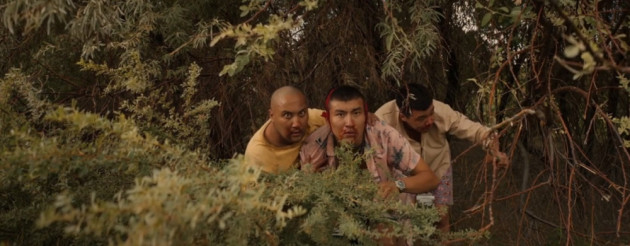
The ‘boys’
Put upon husband Dastan (Daniar Alshinov) feels overwhelmed by encroaching domesticity: a pregnant nagging wife Zhanna (Asel Kaliyeva), bill collectors and a lousy job. Thinking that a fishing trip with his two best pals Arman (Azamat Marklenov) and Murat (Erlan Primbetov) will reaffirm his masculinity, even if he has never gone fishing in his life, he leaves his soon-to-deliver wife for a day of masculinity esteem building in the wild steppes of Khazikhstan. When their guide is brutally stabbed in the eye and his jaw ripped open by a bald, sneering local psychotic the challenge to their masculinity gets real. The fallen guide’s brothers find his mangled corpse and swear to avenge him, mistaking our heroes as the killers of their brother. So now our three nominal heroes have the killer plus three revenge seeking brothers to contend with. Probably a lot more than they bargained for! Poor Dastan is kidnapped by a crazy man and his lovesick daughter, who wants to marry Dastan. Dastan is ‘rescued’ by the vengeance seeking brothers who question him about the whereabouts of his two friends. But Dastan is once again saved when the three brothers are confronted by the local psycho. In the film’s best scene, an hilarious visual gag set-piece worthy of Chaplin or Keaton, the equally bald Arman tries to rescue Dastan from the psycho but does not realize the psycho is in the cabin with them. What ensues is an elaborate game of Arman trying to stay hidden in plain sight from the killer, while Dastan hides under a bed. The tone of Sweetie, You Won’t Believe Me is on the far side of comedy and when it veers to thriller territory is still laced with a light touch which recalls a mood of hilarity (horror mixed with humour). The film aligns with the traditional comic finale with Dastan returning home and going to the hospital just as his wife has given birth. The overall set-up of the story recalls Deliverance, Kazakhstan-style, right down to the penultimate scene of a hand jutting out from a swamp.
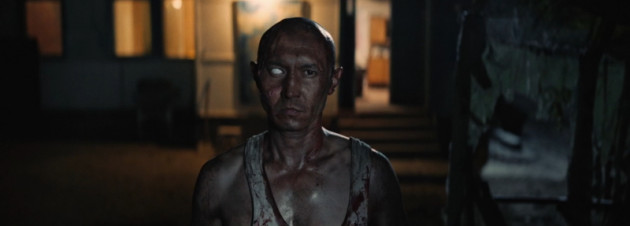
The local psycho
Night of the Living Dicks (2020, IIja Rautsi, Finland)
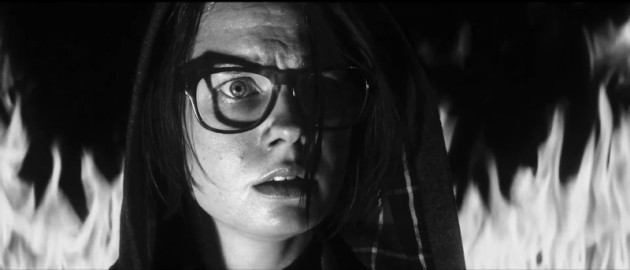
Night of the Living Dicks
Night of the Living Dicks is a great example of a ‘high concept’ film which takes its single idea –men are dickheads, literally– as far as it can to forge a blunt attack on misogyny. It is an example of woke horror at its best because it does not pander to the converted. Cinematically it looks great too, a digital film with a (very) high contrast B&W visual style that looks like Eraserhead, without the grain. The film begins with a TV talk show pairing a right wing member of the Finnish Parliament Simo Rantamies (Tomi Korpela) and a young photographer, Venla (Sonja Kuittinen), to discuss a man’s right to send dick selfies to women. Simo reasons that women should in fact be happy to receive them. Venla is so shocked by his brazen attitude she freezes and says little in response. She leaves the studio and goes to a bar and meets a woman happily being chatted up by two guys on the make. They are younger than the cad on the show but equally vulgar. This is a world where men act upon their base desires with no consideration for women as anything but beings to service their needs. The film sets up a speculative scenario: what if there were glasses which if worn would allow women to see men as they really are: literal dickheads? The conceit is essentially a transformation of They Live, Carpenter’s SF satire where alien invaders have blended into society and are only visible to people who wear special eye glasses. But the political edge blends well with the outstanding visualization of the men with dick shaped heads, all practical visual effects, no CGI (that I can see) who form ‘fight clubs’ where men stand around and gloat about their manhood and routinely ‘explode’ sperm-like fluid from the tops of their ‘head.’ The tone is absurdist but the slickness of the imagery produces some strikingly grotesque ideas, like a woman who reveals herself to be the female equivalent, ‘a vagina face’, with a creepy, moist vertical slit where her mouth would be. In a gesture which recalls Pleasantville, Venla transforms into color, which causes the men to do likewise and express emotion. One of the men, Frodo, rips off the top of his penis head, making himself ‘non-binary’. As a male viewer your only recourse is to suck it up and laugh. Loudly if you have any sense of humor.
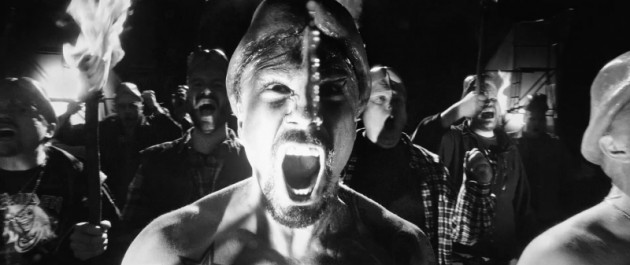
Night of the Living Dicks
Don’t Say its Name (2021, co-writer Rueben Martell, Cree, Canada)
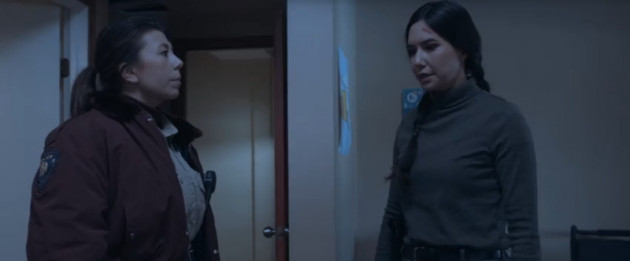
Sheriff Betty Stonechild & Park Ranger Stacey Cole in Don’t Say its Name
Indigenous environmental activist Kharis Redwater (Sheena Kaine) is returning home late one night from a Band meeting where she made her opposition clear to a coal mining company’s (WEC) expansionist plans on tribal land. On her way home she is killed by a hit and run driver, who we assume is acting on behalf of the mining company. The grieving mother Mary Lynne Redwater (Carla Fox) is accompanied by local sheriff Betty Stonechild (Madison Walsh) to identify her daughter’s body. After this cold opening this small community is hit by a series of brutal attacks where the assailant seems to be an invisible force and the victims showing bear-like claw markings to the face and neck. The first victim is a woman land surveyor who sensed the threat in a black crow flying overhead and an odd smell in the air. Both of these events, the crow and the odd smell, precipitate the subsequent attacks, which are filmed from a distorted bird’s eye point of view and fast moving camera movements.
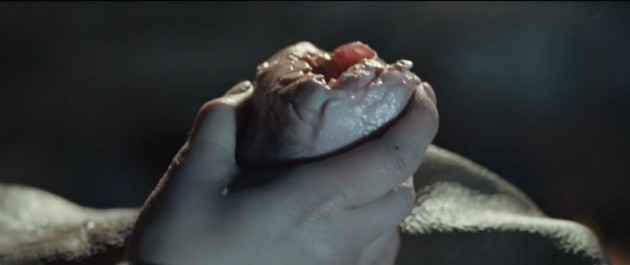
Don’t Say its Name
Sensing that these deaths are beyond her skillset, the sheriff deputizes a sharpshooting trapper Park Ranger Stacey Cole (Sera-Lys McArthur) and Cole’s uncle Carson Stonefeater (Julian Black Antelope) to help her solve the case. Stacey immediately establishes her street cred when she stands up to a racist miner making crude sexual remarks by hitting him across the face with her gun. When Stacey witnesses an attack on Carson she tells Sheriff Stonechild that she saw what looked like Kharis’ face in the shapeless form of the attacker. Betty’s Caucasian superior officer does not believe in the provided explanation of a spirit and blames it on “mass hysteria” among her Band. But Betty, Stacey and Carson accept the reality of the spirit world. Carson even understands how the spell works when he asks about the whereabouts of Kharis’ heart (which we will later learn is being used by Kharis’ mother to invoke the spirit). The attacks are politically motivated. Kharis’ spirit attacks anyone who either rapes the land (poachers) or supports the white-owned mining company who want to ‘rape’ Indigenous land. Even the Indigenous Carson is not exempt from her wrath when we learn of his willingness to work with WEC for the promise of jobs for his people. In the film’s climax Kharis’ spirit stalks the sheriff’s son Ben Stonechild (Samuel Marty), as he is on his way to apply for a WEC internship. Betty and Stacey come to his rescue and confront Kharis’ malevolent spirit. The spirit at first is an amorphous, smoke-like presence (admittedly, the CGI here is the only negative thing about the film), but becomes more material as it commits each murder. First a face, then a partial body and by the end, a whole body that gets caught in a bear trap. Betty and Stacey are able to overcome the entity but only when Kharis’ mother tosses her daughter’s heart into the fire, at which point we cut back to Kharis’ spirit collapsing in an anguished cry. The sheriff and Stacey now realize what Carson knew, that Mary Lynne was using her daughter’s heart to summon her back in the shape of a spirit named Wheetago as a foil to avenge her death. Betty’s unsympathetic superior officer comes to the scene of the incident. Betty and Stacey cover up the supernatural showdown by identifying Kharis’ covered corpse as another person who simply fell off a ladder. The cop informs them that the hit and run driver from the opening scene was apprehended and is handcuffed in the back seat his car. In the twist finale we cut to a close-up of the heart in the fire still pumping. The shot cuts to a slow dolly in to the man in the back seat of the police car. The sound of a heart beat carries over into this shot. The man smells something pungent. As the camera moves in closer to the car, off-screen sounds fill in for the unseen: a heartbeat, a crow’s caw, the man’s yell, the sound of smashing glass. The spirit of Kharis lives on.
Don’t Say its Name was shot on a Reservation in Alberta. As a supernatural horror film it does not make any concessions to an Non-Indigenous audience. The supernatural aspects are not cloaked in uncertainty or ambiguity. They are accepted as real by all the Indigenous characters. While specific elements of the supernatural events are left open: why do the circling black birds make the victims, sheriff Stonechild and other locals apprehensive? What is the origin of the spirit? What precise powers does the mother use to invoke the demon? What’s also different from more traditional North American horror is the overall complexity of the (Indigenous) characters. There are no heroes or villains. Kharis’ spirit controlled by her mother Mary Lynne is murderous and yet neither are demonized by Betty or Stacey, who understand Mary Lynne’s motives are couched in Indigenous anti-colonialism.
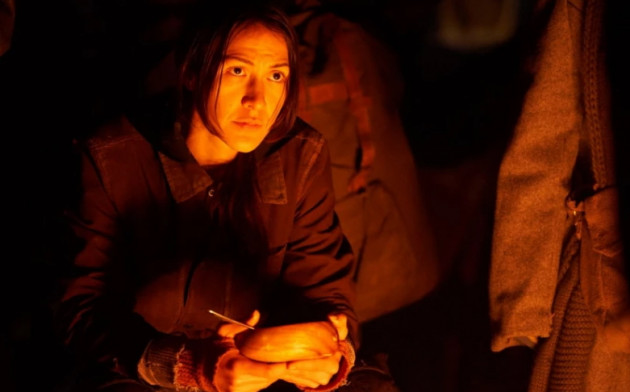
Night Raiders
Don’t Say its Name comes during a purple patch for Indigenous-Canadian horror films, like Blood Quantum (Jeff Barnaby, 2019), Night Raiders (Danis Goulet, 2021), the excellent short films The Black Case (Caroline Monnet and Daniel Watchorn, 2014), A Red Girl’s Reasoning (Elle-Máijá Tailfeathers, 2012). A second Indigenous themed film at Fantasia was Catch the Fair One, directed and screenplay written Josef Kubota Wladyka, starring a remarkable Kali Res (who also co-wrote the story) as 29 year-old half Native, half Cape Verdian boxer Kaylee KO who becomes a one-woman wrecking crew trying to rescue her younger sister Weeta (Mainaku Borrero) from a human trafficking ring. Kaylee feels responsible for her sister’s kidnapping and the incident has placed a strain on her relationship with her mother Jaya, who runs a support group for Indigenous trauma survivors. The style here is harsh and gritty, with most of the scenes taking place at night, with low key lighting and a restricted color palette. The camera is often hand-held and constantly following Kaylee, who is single-minded in her determination to find her younger sister. The film’s street realism comes not only from the hand-held, low key visual style but from the fact that many of the actors are taken from the boxing community. Reis is an actual world championship boxer in the welterweight division, and her trainer Brick is also a boxer (Shelly Vincent).
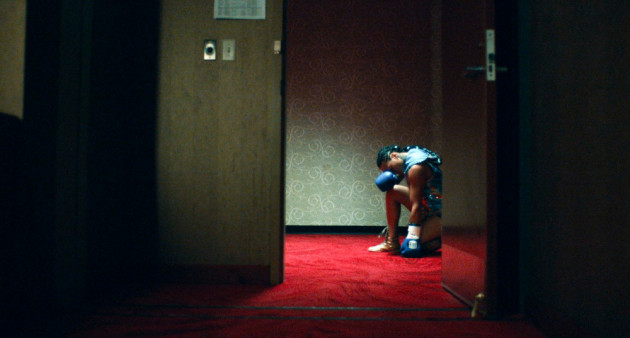
Catch the Fair One
The prostitution ring is run by a 60ish year old man nicknamed ‘the bird’, Willie (Kevin Dunn) and his wife Debra, played by Lisa Emery, who strangely plays a role here similar to the one she played in the TV show Ozark —accomplice to her husband in a drug trade. Kaylee infiltrates the ring but is quickly caught out and set-up to be executed. Her habit of hiding a razor in her mouth is her salvation as she cuts through her tie-on manacles and kills one of her kidnappers. She then hides in the trunk of Willie’s son Bobby’s vehicle and enters his home in Trojan horse fashion, where she overtakes Bobby and ties up his accomplice wife and young son and forces them to watch as she tortures him for information on her sister. Bobby stays silent and dies under the extreme water torture. Her trail ultimately leads to a dead end but she manages to kill the head of the operation, Willie, and his wife and son. The most disheartening moments in the film are when Kaylee’s questioning of her sister’s whereabouts are met by such brutal callousness (“Do you think I remember their names?”).
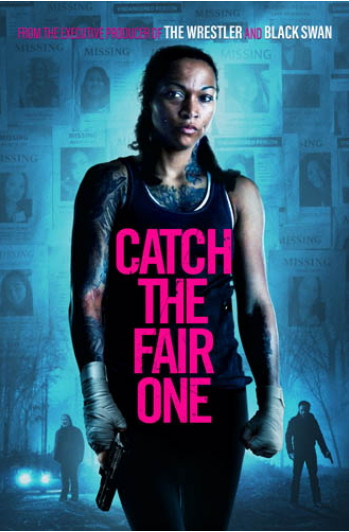
Catch the Fair One is a hard-edged crime thriller/revenge film which wears its political stripes loud and clear. The human trafficking ring caters to men with a preference for Indigenous women (and girls), which has a direct correlation to the hundreds of missing and murdered Indigenous women reported in many North American news and media outlets in the past several years. Everything from Kaylee’s costuming, her tough warrior demeanor as a boxer, her mother’s status as an elder helping Indigenous people traumatized by having lost wives or daughters, and the selection of music speaks to the real life crimes against Native communities and the Indigenous resolve to seek out justice. The surface aspect of the plot recalls Taxi Driver and Travis Bickle’s efforts to safe the young Jodie Foster from the clutches of a New York city pimp. Even to the point of emulating the ‘imagined’ happy ending in Taxi Driver (more obviously coded as being imagined by Kaylee in Catch the Fair One).
Another film from the same year that this one reminded me of was, Pig (2021), in the way both films downplay any of the usual audience pleasing aspects of the revenge genre (which Pig outrightly subverts). Although the audience will see Kaylee’s actions as heroic, the film also paints a grim picture where no one gets out alive.
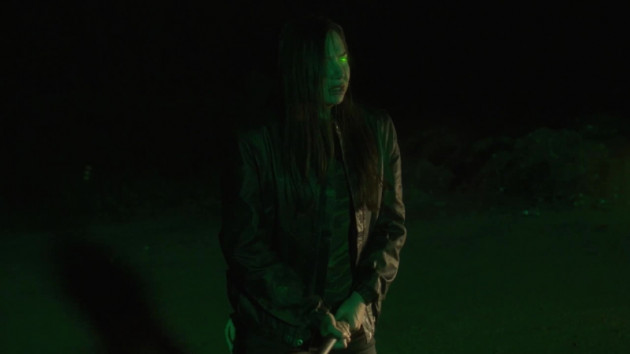
Stephanie empowered by the fire spirit (She Whistles)
Also dealing with the theme of missing Indigenous women is the short film She Whistles (Thirza Cuthand, Canada, 2021), which played as part of the always interesting “Born of Woman” short film programme. She Whistles is in the tradition of the rape revenge film, recalling A Red Girl’s Reasoning (2012). Stephanie (Sera-Lys McArthur), a young Indigenous lesbian, hails a cab late at night driven by a predator (Aidan Devine) who drives to an abandoned area with the intent of raping her. Stephanie uses an Native folktale (revealed in a final title card) to summon (by whistling) a fire spirit which she uses to burn the rapist to ashes. The act gives her closure as she comes to realize that this may be the man who killed her mother ten years earlier. The cab driver’s MO included snapping non-consensual photos of his clients seated in the back of his car. The film concludes with a touching scene where Stephanie flips through the cab driver’s cell phone pictures and sees the many other Indigenous women who have come before her.
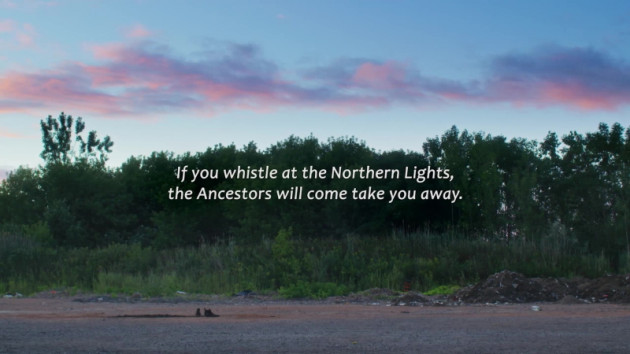
She Whistles. All that remains are his shoes and a pile of ashes.
Men who kill women inform two other shorts in the Born of Woman programme, Victim No. 6 (Nancy Menagh) and Dana (Lucía Forner Segarra, Spain). It is 1975 and a brutal serial killer is loose on the streets of New York. In Victim No. 6 the scenario shifts the dynamic from women as victim to women as predator, as girlfriends Donna (Heather Brittain Oscanion) and Judy (Rachel Farrar) go out for a late night drink at their local. Both women leave the bar with a man, but the narrative follows Donna, who has picked up Mark (Russ Russo), a mustachioed denim wearing guy who looks like he walked off the cover of a 1970s men’s magazine (for a small film the recreation of the 1970s in terms of visual style and mise en scène is impressive). Anyone who has seen a few feminist appropriations of the serial killer film will see the twist coming but the fun is in seeing how oblivious the men are to the potential threat of a female killer. And watching toxic masculinity play out 1970s style in the high levels of male testosterone on view between two alpha males competing for Donna in the bar.
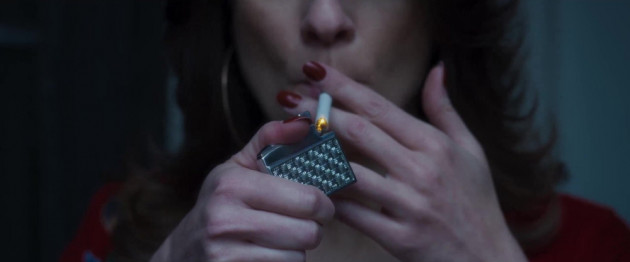
Victim No. 6
The Spanish short Dana is another take on the feminist rape revenge film which begins quite brutal and ends up being a lot of fun (while maintain its political edge). On the proverbial late night walk home from a bar Dana (Thais Blume) is attacked by a physically imposing rapist, who she manages to overcome and murder with repeated attacks to his neck with a ballpoint pen. Following the horrendous event Dana seeks solace from a sympathetic male friend, while laying low in her trailer park home listening to the news. She learns that the man she killed was convicted of 59 rapes (!) and still released from prison for a legal technicality. The film depicts her conflicting traumas –the assault on her and that she killed someone– with stark realism, but when she learns about the row of rapists who are routinely released from prison to rape again she decides to take action and, as her name comes to mean, become “the one who judges”. At this point the film’s style turns away from realism to a female fantasy wish fulfilment, with a strong edge of black comedy. Her MO includes stapling the rapist’s police record onto their corpse; slitting their throats from behind as they are about to rape and using a plexiglass hand shield to protect her face from the victim’s splattering blood. The female radio announcer reports how Dana has inspired copy cat killers all over the world, who modulate their MO according to cultural codes (ie., a rapist in Somalia is stoned to death). The female radio announcer christens this “the Dana Movement.” Interesting coincidence that both She Whistles and Dana end with the lead character in a car.
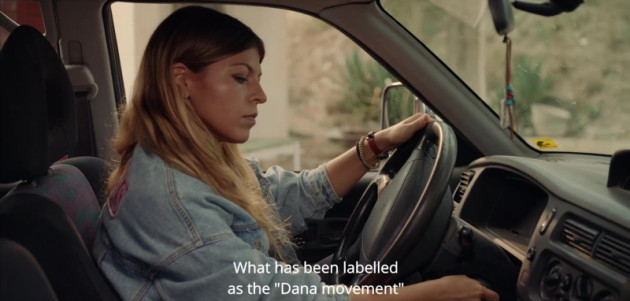
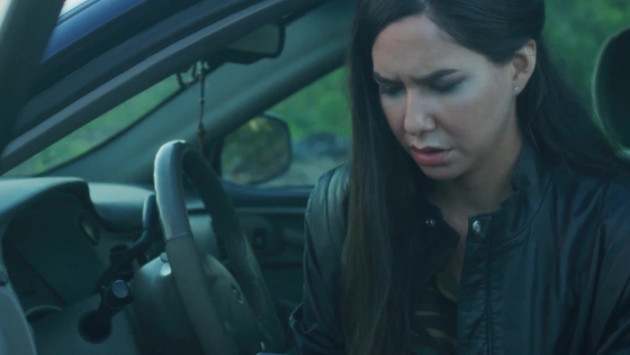
Final shots from Dana and She Whistles
Lifeblood (Nicholas Tory, Australia, 2021)

Lifeblood: The Beginning of Time
Lifeblood is a beautifully told Indigenous Creation story which takes an extremely “wide” view of the many clans and tribes living in Bourke Shire, in the Orana region of New South Wales, Australia –perhaps the reason why this animated short is filmed in a ridiculously “wide” aspect ratio of approximately 3.4:1. It begins at the beginning of time, with a figure known as the Baiame as the creator and takes us through an evolution of the living beings in its eco-system, in air, land and water. The building of the railways, roads, automobiles, trade routes, river ports. Every single frame of the film has a living being: ants, flies, fish, kangaroos, fires, birds, horses, plants, trees, water, humans. The camera perspective changes constantly to match these living views: from high above to the ground to under water. The voice-over narration explains a time when children were taken from their families by the Australian government and the church to missions, the Australian equivalent of Canada’s residential school system. And how the precious balance of wet, arid, hot, cold has been impacted by the warming of the planet. This film asks essential questions that cut through the debris of personal interest: What does it mean to be alone in a world surrounded by life? Every person on this planet should be instructed to watch this wonderful, meditative account of how our planet has been impacted by human intervention. In the end the VO asks, “He [Baiame] knows this place. And so do we. This knowledge is a gift. And what we need to protect it.” Why does it seem that it is only Indigenous and Native peoples who are asking these questions, of themselves and of others?

Lifeblood: Living in Harmony




